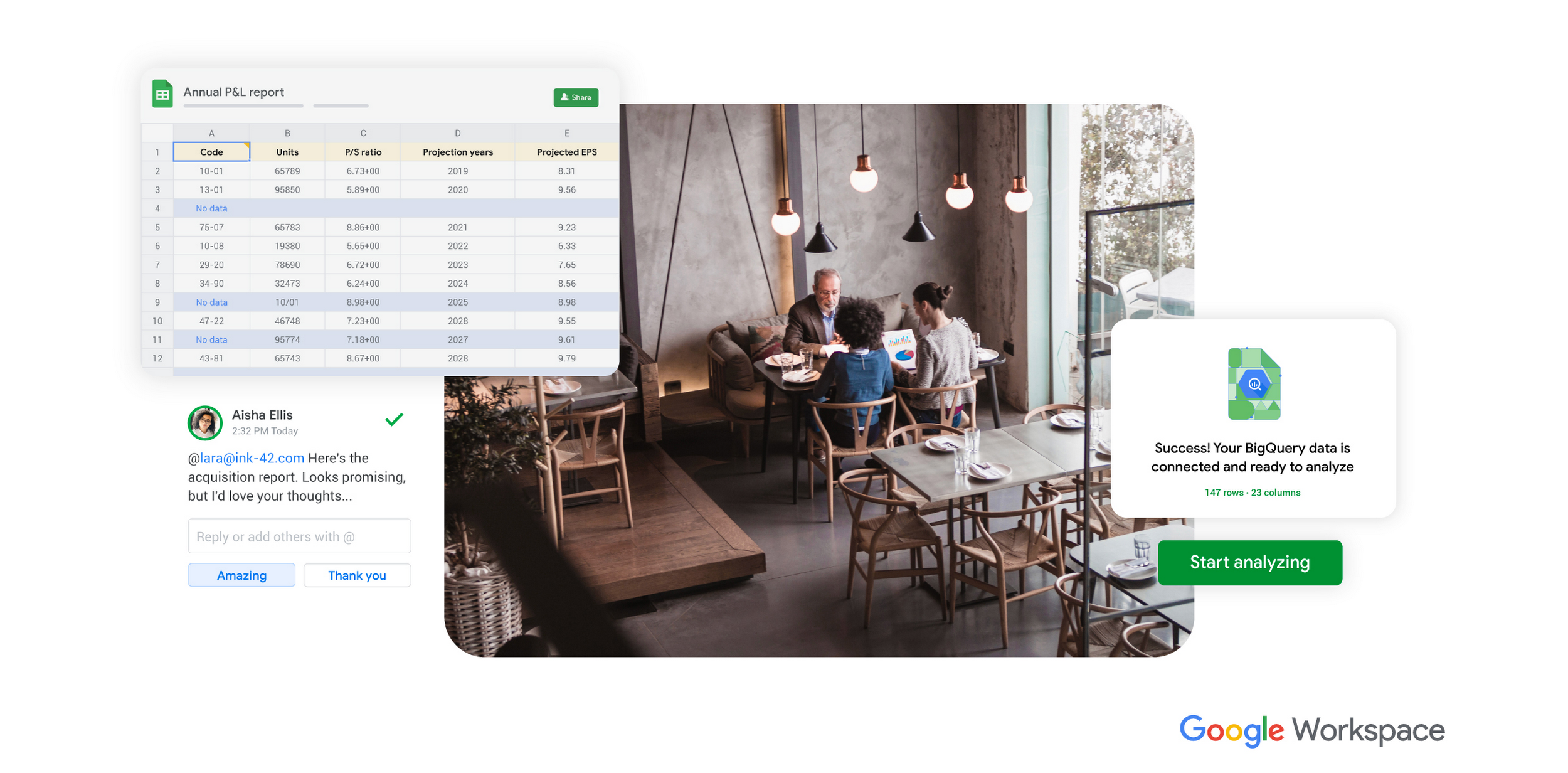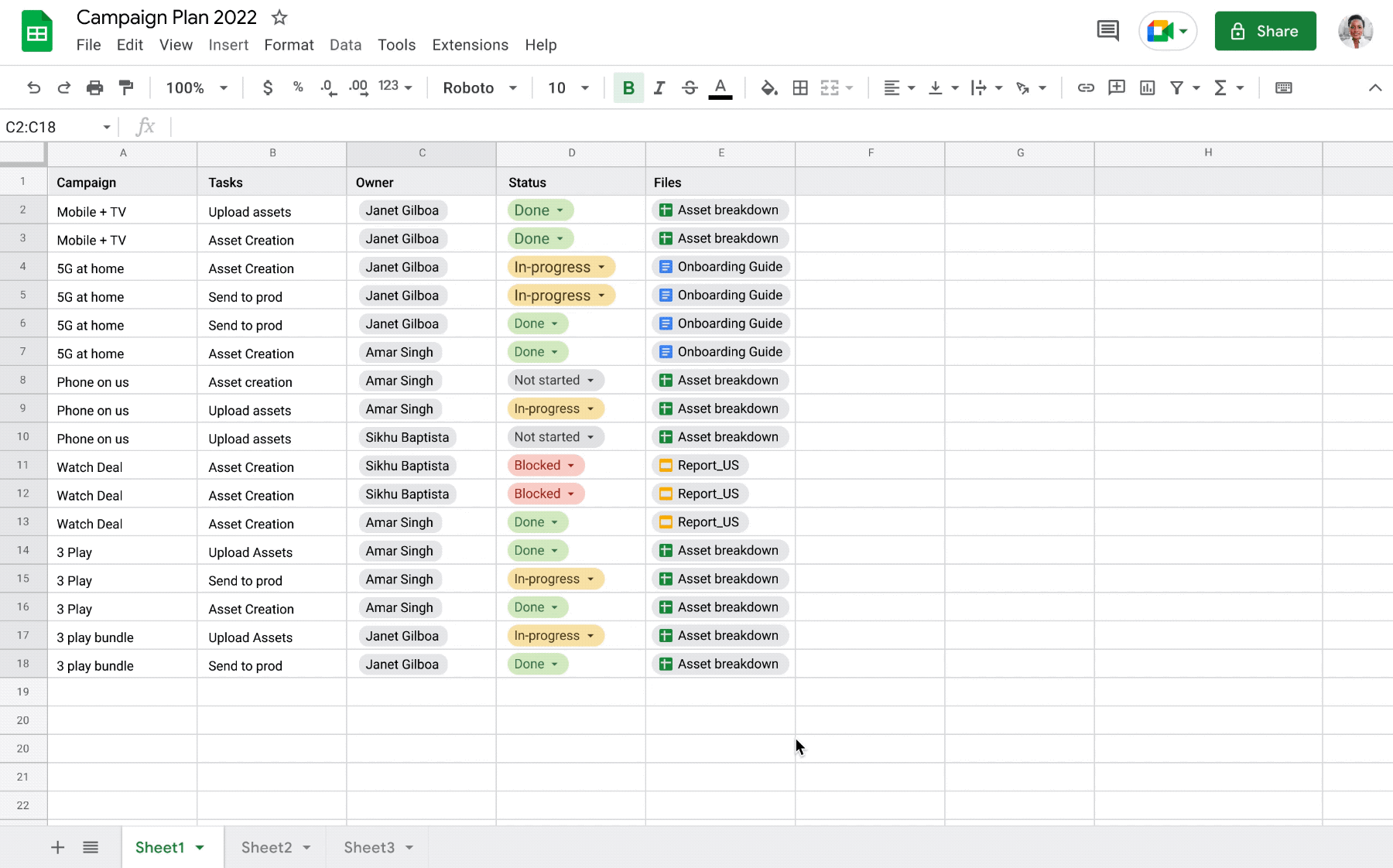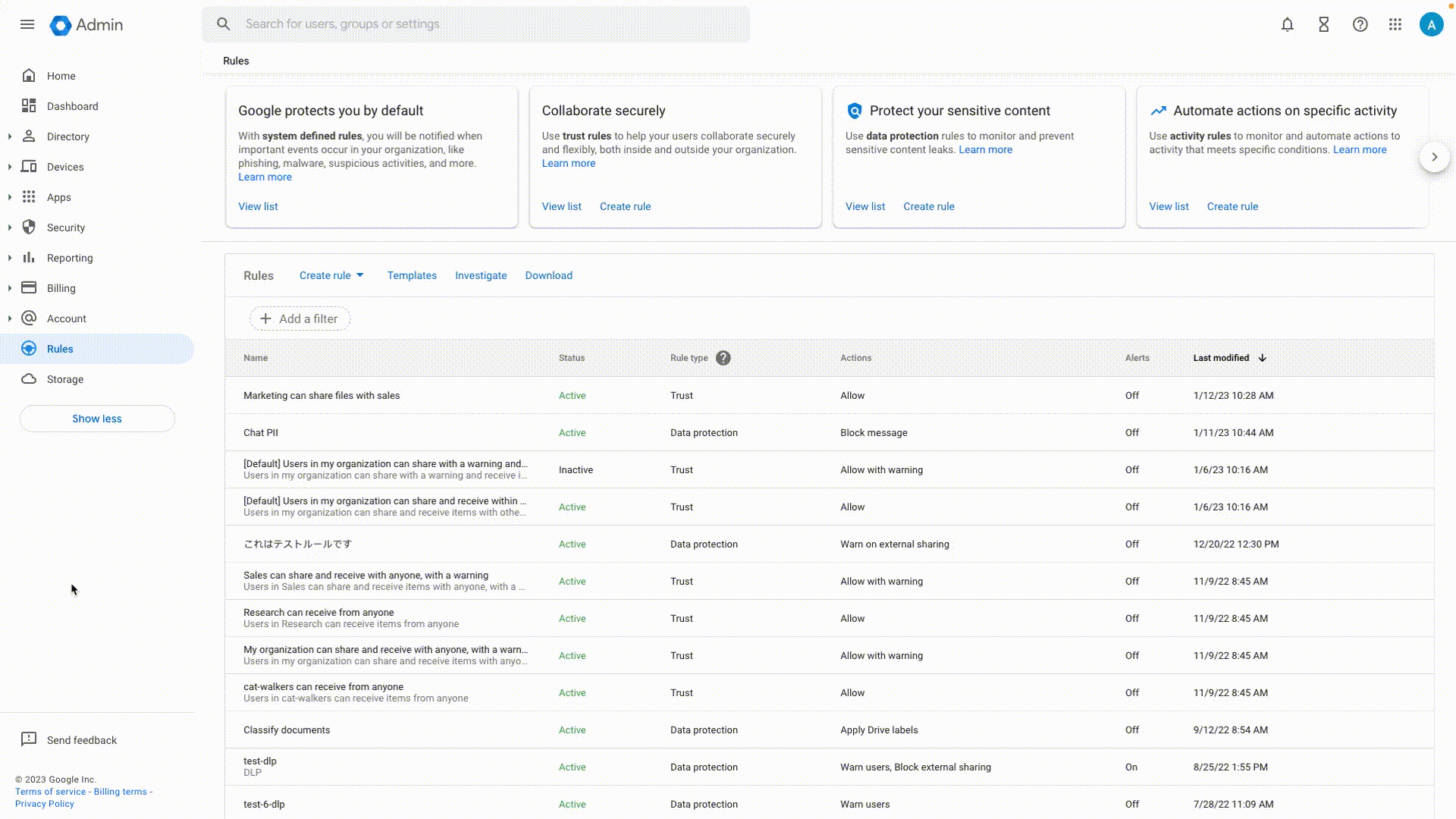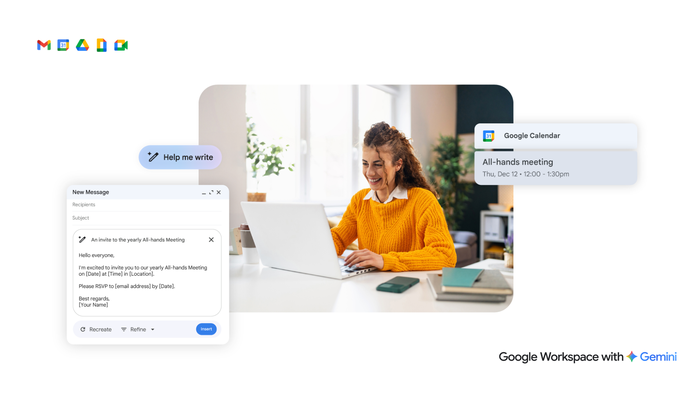Interview: How a veteran finance leader became a convert to Google Sheets

Eric Refuerzo
Senior Director, Finance, Google Cloud AI
Vishnu Sivaji
Senior Director, Product Management, Google Workspace
Try Google Workspace at No Cost
Get a business email, all the storage you need, video conferencing, and more.
SIGN UPI spend my days thinking about how Google Docs, Sheets, Slides and more can delight users and accelerate innovation for the future. So I was naturally thrilled to hear that a veteran finance leader who recently joined Google has been evangelizing about his conversion to Sheets. I sat down with Eric Refuerzo, Senior Director of Finance for Google Workspace and Maps Enterprise, to understand his background, how finance teams are operating in the new world of work, and how and why Sheets won him over.
Here are some highlights from our conversation:
Vishnu Sivaji: Eric, thank you for joining me. Let’s start with your career journey. Can you tell us a bit about your background and why you chose to come to Google?
Eric Refuerzo: Glad to chat! I'm a corporate finance professional with more than 25 years of tech finance experience. I’ve worked across all facets of finance—from financial planning analysis to strategy and mergers and acquisitions, and I was also a Divisional CFO, working across companies like Cisco, VMware, and Hitachi Vantara. What brings all these different roles together is a desire to deliver world-class finance support for truly global teams. Having the opportunity to come to a company like Google where we literally serve billions of users is a once-in-a-career opportunity. I’m thrilled to be here!
Vishnu: Awesome. That's one of the reasons that I joined Google and have stayed for so long. I was curious about how you’re seeing finance teams change the way they work, both during the pandemic and now that hybrid work is the new normal for many organizations. How do you see teams continuing to stay productive and making decisions to move quickly?
Eric: Hybrid has really changed the game for finance, making us more nimble, agile, and collaborative. By nature, lots of finance folks are analytical and need heads-down time to work their models. Hybrid opened things up for us in a few ways. It gave us dedicated focus time at home and then deeper collaboration and whiteboard sessions when we come into the office. I’ve been amazed by how productive we’ve stayed, and by the way hybrid has brought in a broader range of inputs and insights into our work. The real-time and “in your own time” communication and collaboration capabilities that Google Workspace offers are sort of baked into the way we work now.
Vishnu: You started talking a bit about Workspace products and real-time collaboration. Let's talk a little bit more about one part of Google Workspace you spend a lot of time in—Sheets. Now, I'm curious about your personal transition from Excel to Sheets. What did you find the most surprising? Or what's delighted you?
Eric: Some context setting. In my 25-year-plus career, I’ve always been considered an expert in data analytics modeling and I have very high expectations of my team. Until coming to Google this year, I’d spent my entire career in Excel—using and living in that tool. So I was highly skeptical during my interview process. I said, okay, as part of my research, I'm going to use Google Workspace and test its abilities, especially for Sheets, using the free edition.
I was stunned by the fact that I didn’t miss any Excel features! Excel has a lot of features, but many of them don’t get used routinely in the finance world. The second thing that struck me was just the power of a scalable cloud solution and not having to worry about saving the spreadsheet I was working in. Working in my previous company, the transition from on-prem to Microsoft 365 was incredibly painful. And arguably, one of the biggest complaints with Excel is that the shift to the cloud is clunky.
And then the third thing for me is just the real-time collaboration, the ability to loop people into the Sheet where I’m working by using @-mentions and smart chips, or by sharing directly with them without having to jump into an email or chat. This way of working creates active collaboration. I’ve been blown away by how productive and collaborative Sheets and the rest of Google Workspace makes me and my team.


Vishnu: As the product director for Sheets, that’s music to my ears! Have you run into any interoperability issues?
Eric: Really, none. Sheets allows for a one-stop shop in terms of being able to get your work done and connect across the various applications for productivity, communications and collaboration. I can work with Connected Sheets, so we can analyze billions of rows of BigQuery or Looker data in our familiar Sheets interface and bring in other internal data sources. And if for some reason an external party sends me an Excel file, I can import it safely and seamlessly into Sheets.


Vishnu: What else stands out for you as strengths with Sheets?
Eric: Security and compliance are big ones. I love that my confidential data is secured by best-of-breed capabilities in Google Cloud and that no one in my team has to download sensitive data to their laptops to get work done. For example, you can disable downloading, copying, and printing for viewers and commenters, which is something that competitors who support desktop apps simply cannot do. And because of data loss prevention (DLP) and trust rules in Drive, we can control how our most sensitive data can be shared internally and externally—how and by whom. So all that gives me peace of mind.
Then consistency of performance is a daily gift! With Excel, you’re often juggling on-prem and off-prem offline modes, but what ends up happening when you move between the two worlds is a possible loss of data. You go into recovery mode after a crash and it can happen several times a day to finance professionals. I suspect my teams used to lose hours of their productivity just from having to clean up data from auto-recoveries. Thank goodness we don’t have that problem in Sheets. I’m always confident our data is available. You can see minute by minute versions with revision history and even restore an older version completely if needed. It doesn't surprise me that Google's finance teams run on Sheets!
Vishnu: Can you talk a bit about using adjacent tools to work with large data stores? We want financial analysts to be able to easily pull in data on the fly and work with it at scale. Is that sort of functionality in high demand?
Eric: It absolutely is. And, you know, using complementary tools in a seamless way is the future of finance. I’ve worked for a lot of CFOs and CEOs and really the name of the game for finance is moving more into a broader type of a CEO kind of mindset. Because it’s about adding as much real-time insight as possible, and it's all about data as the new currency. We want to be able to synthesize millions of rows of data and provide both the detail and the crisp summary. To get there, we use multiple tools and we have to know that they’ll interoperate. Looker is a core part of that and even AppSheet. I’ve just started playing around building custom apps to bring in select inputs within a workflow. At the end of day, it’s about being able to tell a story with all these connected tools, but then also being able to support all of that with an incredible amount of detail. We want the forest and the trees!
Vishnu: If you had to give finance leaders like yourself at other companies advice on how to push for the Sheets transformation in their own worlds, what would you say?
Eric: Yeah, great question. I think I’d encourage people to take a fresh look at their current tools and compare them to applications like Sheets and the broader Google Workspace solution. Look at functionality, but also look at the return on investment individually across email, chat, video conferencing, etc. When you start stacking all of those SaaS monthly fees, you can go from spending $100+ per user, per month to maybe $20 or $30 dollars per user, per month by standardizing your workflows through Workspace. My advice to teams is to try it within certain groups. You can even bring in a no-cost solution like Google Workspace Essentials Starter, and then upgrade for desired step functionality. The products are so easy to use that I've had zero ramp up time and that's the feedback that I get from people across my team, even the ones who’ve left the world of Excel after more than 20 years!



